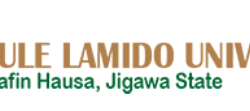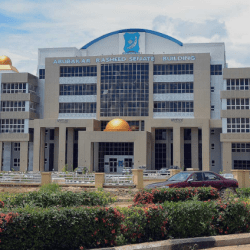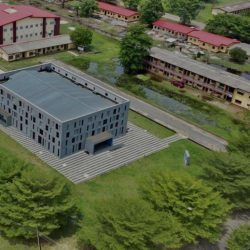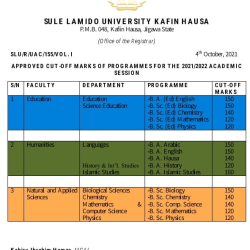There were over four thousand programmes across the entire universities with academic staff strength of about 77,000 in December 2020,

The challenge has been in the explosion in student population and the number of aspirants seeking university admission.

The total student enrolment in all Nigerian universities grew from over 2000 in 1962 to about 1.94 million in December 2020.

About 2 million candidates registered to take the Unified Tertiary Matriculation Exam (UTME) in 2020.
How the Nigerian University system started & developed
The development of university education in Nigeria started with the inauguration of Elliot Commission of 1943, the report of which led to the establishment of University College, Ibadan (UCI) as an affiliate of the University of London in 1948.
In April 1959, the colonial Government set up the Ashby Commission to advise it on the higher education needs of the country for the first two decades.

Before the submission of the report, the Eastern Region Government established its own university, University of Nigeria, Nsukka in 1960.

The implementation of the Ashby Report led to the establishment of the regional universities in the Western and the Northern Regions: University of Ife (now Obafemi Awolowo University), Ile-Ife and Ahmadu Bello University, Zaria in 1962 respectively as well as a Federal university, the University of Lagos also in1962.

This also led to the establishment of the National Universities Commission (NUC) as an administrative Unit in the Cabinet Office of the Federal Government.
The University College, Ibadan became a full-fledged University in 1963. In 1970, the Midwestern Region (carved out of the Western Region) established the University of Benin.

The six universities are referred to as First Generation Universities.
During the third National Development Plan (1975-1980) and owing to strident demands for more universities in the wake of the geopolitical restructuring of Nigeria into twelve States, the Federal Government took over all the Regional (“Ashby”) universities and established seven more universities located in Calabar, Ilorin, Jos, Sokoto, Maiduguri, Port-Harcourt and Kano -the Second-GenerationUniversities.

The Federal Government established specialized Universities of Technology between 1980 and early 1991 in Owerri, Makurdi, Yola, Akure and Bauchi while a University of Agriculture was establishedin Abeokuta.

During this period, some of the States also established universities. These were found in Rivers, Anambra, Lagos, Osun, Imo, Cross-River and Ondo States.
The Federal Government also took over some State universities as new States were carved out of existing ones and these included the Nnamdi Azikiwe University, Awka and University of Uyo while the defunct Open University in Abuja became the University of Abuja with a Centre for Distance Learning and another University of Agriculture established in Umudike.
The universities established during this period are the third-generation universities.
The inclusion of education on the Concurrent List in the Constitution of the Federal Republic of Nigeria means participation of the States governments while participation by the private sector and individuals in the delivery of education to the public was made possible by Decree No. 9 of 1993.

The public was invited to participate in offering university education in 1983 but the in-orderly manner in which all the 31 universities were established led to their closure.
However, the Federal Government suspended the closure order when Decree No. 9 of 1993 was promulgated.
This has led to the orderly establishment of private universities in Nigeria, the first three having been licensed in 1999. It should be noted that these universities were established to be citadels of learning and development.
Section 8 (59) of the National Policy on Education (2014) outlined the aims of higher education thus:
•Contribution to national development through high-levelmanpower training.
•Development of the intellectual capabilities of the individual to understand and appreciate their local and external environment.
•Acquisition of both physical and intellectual skills which enables the individual to be self-reliant and useful member of the society
•Promotion and encouragement of scholarship and community services.
•For national unity and the promotion of national cohesion, understanding and integration.

Section 8 (60) of the document also states that higher education in Nigeria should vigorously pursue these goals through: teaching and learning; research and development as well as knowledge generation and dissemination and international cooperation; and dedicated service to the communities through extra-mural and consultancy service. In spite of the laudable goals of higher education, the Nigerian tertiary (higher) Education Sub-sector suffers from certain challenges that have undermined the quality.
These include inadequate funding, paucity of academic staff, inadequate and deteriorating infrastructural and instructional facilities as well as inadequate admission slots in the universities on the one hand and low patronage of the polytechnics and colleges of education on the other hand.
Proprietor Governments and private organisations require to address these problems with the seriousness they deserve.













